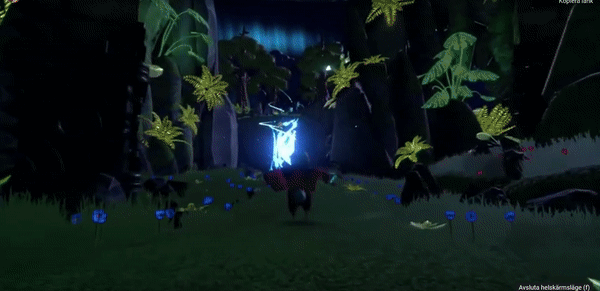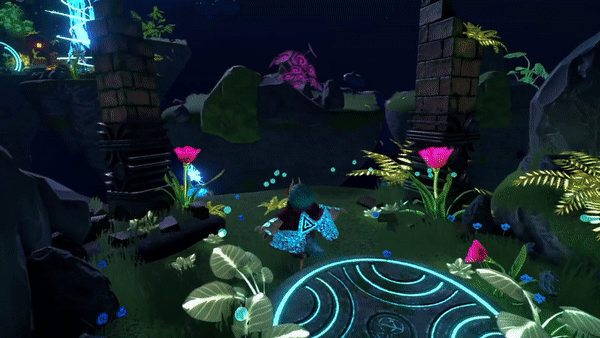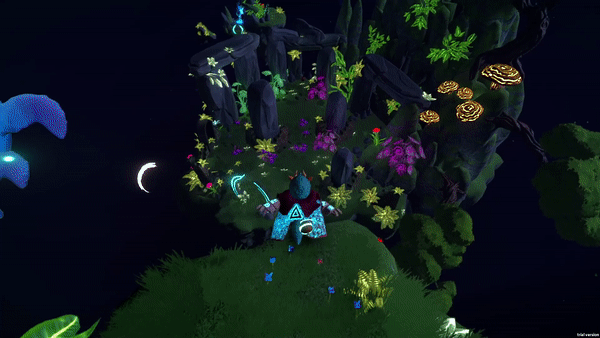
LIBEROSIS
GAME TRAILER
17 Members | 3 Designers | 9 Weeks
Liberosis is a platforming game made for PlayStation. It was developed in Unity during a nine week period and was developed by 17 students. The team was made out of 7 artists, 3 designers, 3 programmers and 4 audio producers.
Description
You play as a young child-like creature trying to find it's place within this world. Master your vortex shot which helps you travel further distances and platform your way through this mysterious world. The vortex shot is used by aiming and releasing a vortex ball, you then dive into the vortex ball and it shoots out with more speed. The ammo for vortex balls can be found within certain parts of the level where they are needed. Enjoy the view and find all collectibles to understand your surroundings a bit better.





Me and my fellow classmates entered The Rookies competition - where we competed in the category Game Of The Year (PC & Console) We managed to win five prices in the competition. If you want to check out our entry you can do it here.
MY ROLE
-
Level Design
-
Environmental Mechanics
-
Narrative Design
-
UI Design
-
Prepared Presentations & Sprint Reviews
-
Influenced Audio & Music
LEVEL DESIGN &
ENVIRONMENTAL MECHANICS
I made the level design of the second level in Liberosis which is the night level.
I was in charge of the environmental mechanics that gets introduced in the second level.
NARRATIVE DESIGN
I was in charge of the narrative design in Liberosis. This included deciding environmental assets that I believed was fitting to the narrative, I was also in charge of the collectibles within the game.
UI (MENU) DESIGN
I designed the menu, which includes the main menu, the options menu and the collectible menu.
LEVEL DESIGN & ENVIRONMENTAL MECHANICS
It was important to me that the game wouldn't feel too repetitive - since we had no immediate dangers within our game. I wanted to create new environmental mechanics that would keep the levels interesting. To introduce something new to the second level but make sure it's not too difficult for the player to comprehend considering we only had two levels within the game and not much time to teach the player new mechanics.
GREYBOXING

I greyboxed the second level using early version of the islands. The example in the picture was one of the earliest versions of a level (not the level which is presented in the game)
BREAKING PLATFORMS

Since there are no dangers to the player - other than missing platforms. I wanted to include breaking platforms as a way for the player to have to move faster during certain parts of the level.
I worked with artists and programmers to develop a stone that breaks and reassembles again. It was made to reassemble so it wouldn't be too punishing for the player if they had to go back.
UPDRAFTS

Updrafts were something that I wanted to include within the game as a way for the player to reach higher altitudes. The updrafts give the player a chance to stop for a moment and inspect the level from a higher point of view.
Both the updrafts and the bouncing mushrooms compliment the vortex shot. This is because the vortex is designed to make the player travel further vertically, depending on the momentum they enter the vortex in.
MOVING ISLANDS

Working with moving islands was quite challenging. The big challenge could be found in not slowing down the flow of the player character. After trying out different patterns and amounts of moving islands - I settled for three. Two that move within a circle so the player doesn't have to wait for the islands - and a third which the player can use as an escalator.
The islands were introduced as a way for the player to feel free to experience more of the level and a way to reach higher/lower altitudes.
JUMPING PUZZLE

Other than working on new ways to make the player character travel upwards and downwards within the level, I also wanted to reuse the environmental art assets as much as possible while introducing new ways to use them.
I made a simple jumping puzzle so that the player had to stop up and think about where they were going.
NARRATIVE DESIGN
Being in charge of the narrative design of Liberosis meant that I collaborated with the artists a lot. I guided the artists with what collectibles we should have, I made an environmental assets document with assets that would fit with the narrative. I wrote all the descriptions for the collectibles and I also designed the last cutscene within the game.
Collectibles
Since we only had nine weeks to work on our project we had to use our time carefully. At the start of the project I had a more complex idéa for the narrative, but I eventually realized that we would not have time to complete it.
I still felt like it would make a major difference to the game to have collectibles. It felt important to have the collectibles show the player that they weren't alone in this world, and to introduce something else that the player could do other than traverse.
I didn't want to put too much pressure on the artists, since they already had a lot on their plate with not much time left. We managed to reuse some of the assets that we already had within the world, and our artists made some new ones, based on my narrative design document.
The last collectible can be found right before the player finishes the game - and it is followed by a cutscene where the player can see the island with the bonfire. The whales are also swimming towards the island as it's the focus point. I wanted the ending to feel hopeful yet mysterious - leaving it open for a part 2.
End Cutscene

UI DESIGN
When I worked on the menu it included setting camera positions, placing the collectibles, creating the design of the buttons, and the general look of the menu. I worked together with the programmers on how I wanted the player to interact with the collectibles in the menu. I also decorated almost the entire scene of the menu.
WHOLE MENU VIDEO

MINIMALISTIC UI
It was decided quite early on in the project that we wanted minimalistic UI within the game.
With this in mind, I decided to make the design, that the stones on the first row symbolize the collectibles that have been picked up on the first level. The stones on the second row are the collectibles from the second level. This choice was made so that the player can approximately know where on the level they might have missed a collectible.












